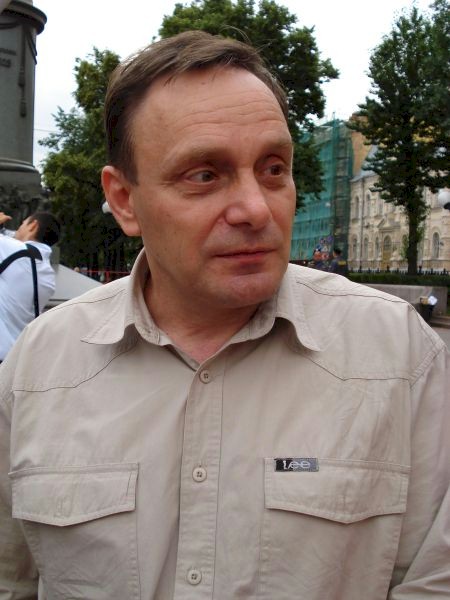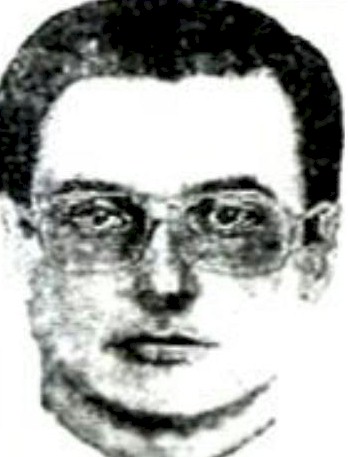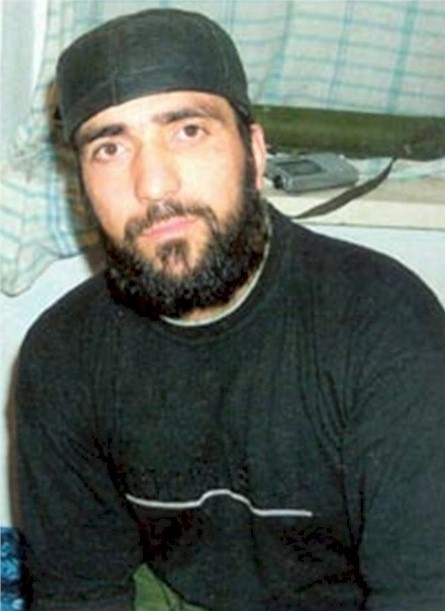Мы продолжаем напряженно работать, чтобы улучшить наш сайт и перевести его на другие языки. Русская версия этой страницы еще не совсем готова. Поэтому мы представляем здесь пока английскую версию. Мы благодарим вас за понимание.
Фальшивый флаг на Украине - 2014
False flag operations
Vladimir Putin may have used a false flag operation twice to start a war: first in 1999 to launch the Second Chechen War and win the upcoming presidential election, and later, in 2014, to «legitimise» the Russian military presence in Ukraine's Donbas area.
The political assassinations under the regime of Vladimir Vladimirovich Putin (°1952) thus began even before he became president. On August 9, 1999, Putin was appointed prime minister by President Boris Nikolayevich Yeltsin (1931-2007). Barely one month later, a series of explosions hit four apartment buildings in the Russian cities of Buynaksk, Moscow, and Volgodonsk, killing a total of 307 people and wounding more than 1,700, and spreading a wave of fear throughout the country. Several more people have died violently or in mysterious circumstances since these attacks. These people had one thing in common: they were tracking down the perpetrators of the bomb attacks in circles that apparently did not want to let them come too close to the truth behind the bombings.
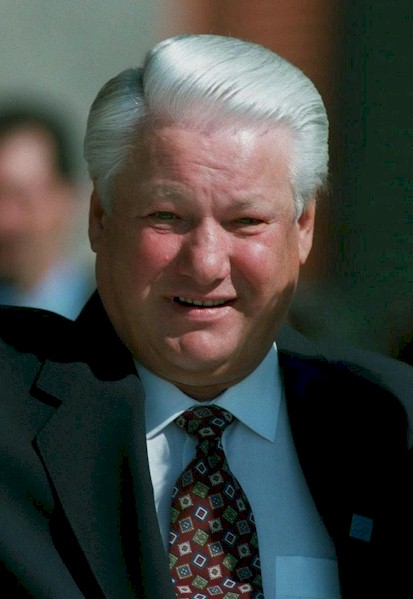
Борис Николаевич Ельцин
The bombings were the direct cause for the Kremlin to start the Second Chechen War. President Boris Yeltsin put the newly appointed Prime Minister Putin in charge of the war. By conducting this war with a lot of publicity and by appearing frequently on television, Putin increased his popularity enormously, which helped him to win the presidential elections a few months later.
On December 31, 1999, Boris Yeltsin announced his early resignation in his New Year's speech and the appointment of Prime Minister Vladimir Putin as acting president. Putin continued the fight in Chechnya, resulting in the destruction of towns and villages and a large number of dead and wounded.
In the meantime, it has been amply proven that the chronology of all these events was no coincidence.
Chronicle of Deaths Foretold
On June 6, 1999, the Swedish journalist Jan Blomgren of the newspaper Svenska Dagbladet wrote that the Kremlin was considering «terrorist bombings in Moscow, which could be attributed to the Chechens». On July 10, 1999, he wrote that the presidential administration was working on a plan to find and support a loyal candidate for the upcoming presidential election in 2000.
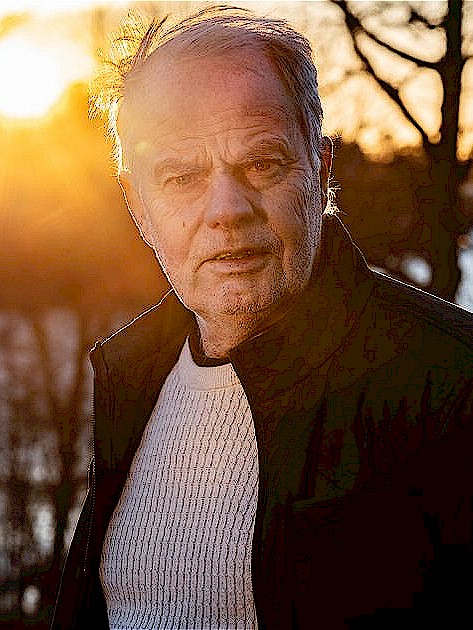
Jan Blomgren
On July 22, 1999, the Russian journalist Aleksander Zhilin of Moskovskaya Pravda warned that a plan codenamed «Storm in Moscow» was being hatched in the Kremlin. Citing a leaked Kremlin document as evidence, he added that the motive was to discredit Moscow Mayor Yuri Mikhailovich Luzhkov (1936-2019) and former Prime Minister Yevgeny Maksimovich Primakov (1929-2015) in order to influence the upcoming presidential election (both were running for office).
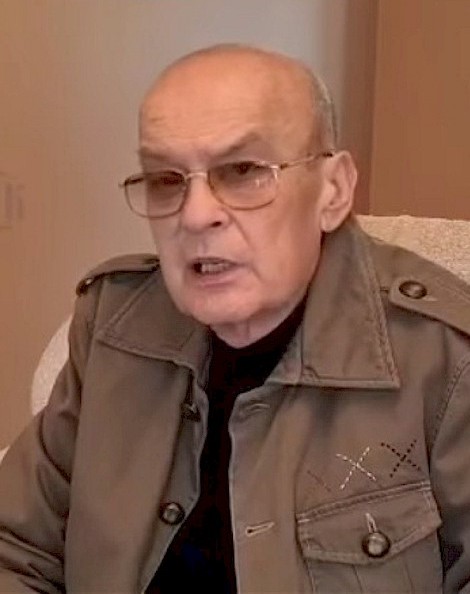
Александр Жилин
According to historian Amy W. Knight (°1946), described by the New York Times as the foremost Western expert on the KGB, «it is even more significant to know that on September 9, 1999, the day of the first bombing of an apartment building in Moscow, the respected and influential liberal Duma deputy Konstantin Natanovich Borovoy (°1948) was informed that a terrorist attack would take place in the city that day». His source was an officer of the Главное Разведывательное Управление (ГРУ) [Glavnoye Razvedyvatelnoye Upravleniye (GRU)] or the Main Intelligence Directorate (GRU), the secret intelligence service of the Ministry of Defense. Borovoy passed this information on to FSB officials who were members of President Yeltsin's Security Council.
However, all these warnings were ignored. And then came the attacks.
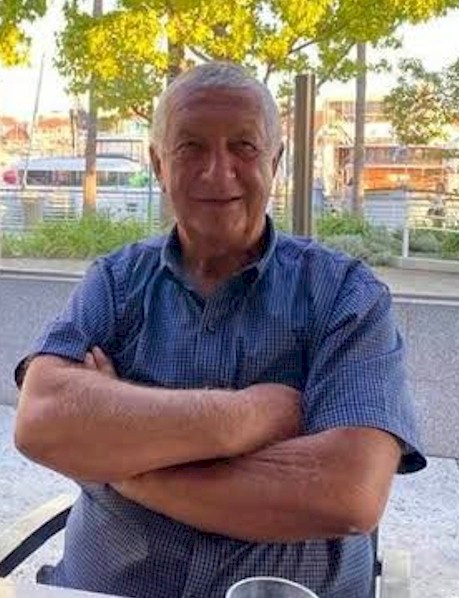
Константин Натанович Боровой
Chronology of the bombings
After the first attack on the Intouris thotel and the Okhotny Ryad shopping mall, four bombings took place and at least three attempted bombings were prevented. All bombings had the same «signature»: a powerful explosive was used (hexogen) and the timers were set to go off at night to cause maximum civilian casualties. The explosives were placed to destroy the weakest, most critical elements of the buildings and make them collapse like a house of cards.
On August 7, 1999, fighters from the de facto independent Chechen Republic of Ichkeria, led by Shamil Salmanovich Basaev (1965-2006), former deputy prime minister of Ichkeria, and Saudi Arabian pan-Islamist militant Samir Saleh Abdullah al-Suwailim (1969-2002), invaded the Russian republic of Dagestan, where they declared Dagestan's independence.
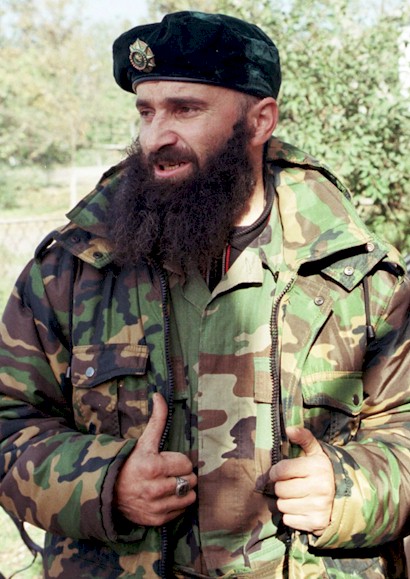
Шамиль Салманович Басаев
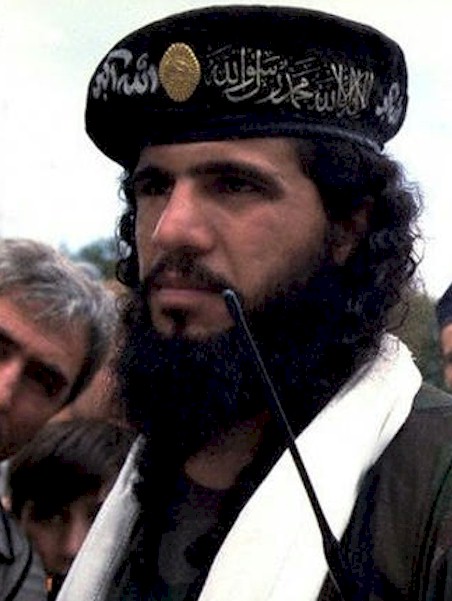
Самир Салех Абдулла аль-Сувайлим
On August 9, 1999, acting Prime Minister Sergey Vadimovich Stepashin (°1952) resigned as chairman of the Russian government and Vladimir Putin was appointed in his place.
Moscow, Intourist office and Okhotny Ryad shopping mall
On April 26, 1999, an explosion occurred in the office of Duma deputy Iosif Davydovich Kobzon (1937-2018), a former pop singer, on the 20th floor of the Intourist hotel, near the Kremlin. The attack injured 11 people, including a 10-month-old baby from Spain
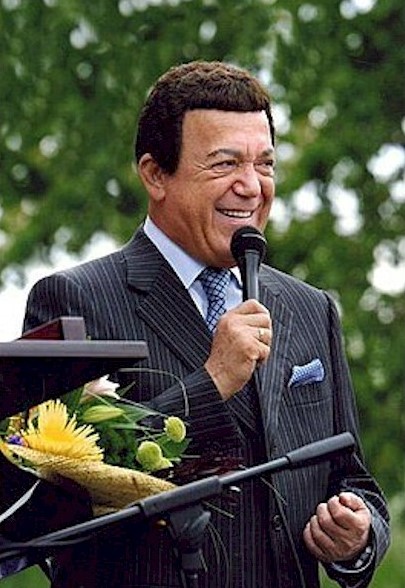
Иосиф Давыдович Кобзон
On August 31, 1999, at 8 p.m., a bomb exploded in the arcade of the famous Okhotny Ryad shopping mall on Manège Square in Moscow. At least 29 people were injured. According to the FSB, the explosion was caused by a bomb weighing about 300 grams of explosives.
On September 2, 1999, a man identifying himself as Khasbulat called the Agence France-Presse news agency in Grozny and claimed that the bombing had been carried out by the militant organisation «Dagestan Liberation Army» - an organisation that probably never existed. On September 9 and 15, 1999, the Interfax news agency and the ITAR-TASS news agency, respectively, received similar calls from an anonymous person «with a Caucasian accent.»
Buynaksk
On September 4, 1999, at 10:00 p.m., a car bomb exploded outside a five-story apartment building in the Dagestan town of Buynaksk, near the border with Chechnya. The building housed Russian Border Guard soldiers and their families. 64 people were killed and 133 were injured. Another bomb was discovered in Buynaksk shortly after the explosion that same day. The defused bomb was in a car containing 2,706 kilograms of explosives. It was discovered by local residents in a parking lot surrounded by an army hospital and residential buildings.
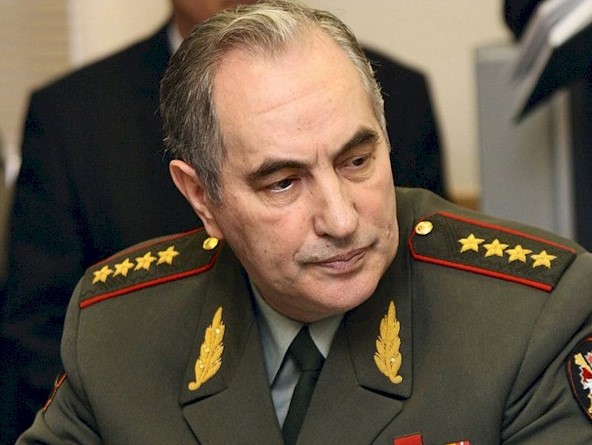
Валентин Владимирович Корабельников
The Buynaksk bombing was carried out by a team of twelve officers from the Russian military intelligence service GRU sent to Dagestan under the command of Valentin Vladimirovich Korabelnikov (°1946), a GRU general. This was confirmed by Aleksey Viktorovich Galkin (°1970), Major General of the GRU. According to Galkin, the bombing was carried out by the GRU «in order to prevent a conflict between the FSB and the Ministry of Defense.
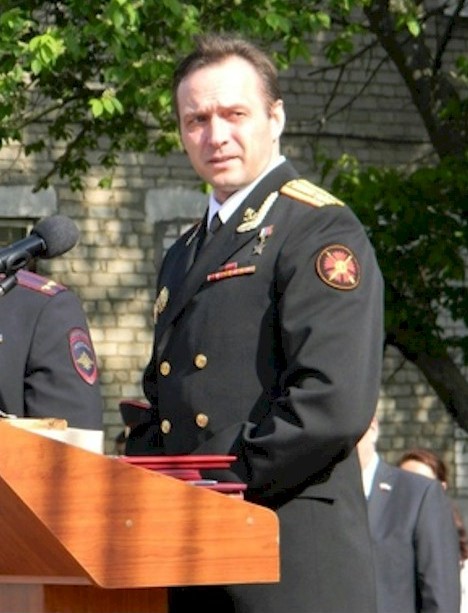
Алексей Викторович Галкин
Moscow, Guryanova Street
On September 8, 1999, at two minutes before midnight, an explosion took place on the first floor of a nine-story residential building on Guryanova Street No. 19 in the Petchatniky district. Two entrances to house No. 19 were completely destroyed. The explosion wave also deformed the structure of the adjacent house No. 17. 106 people were killed and 249 injured. An FSB spokesman announced that traces of hexogen had been found on items found at the explosion site.
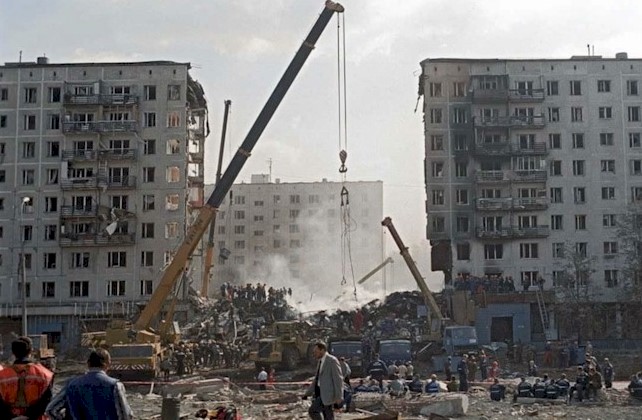
Москва, улица Гурьянова
Moscow, Kashirskoye
On September 13, 1999, at 05:00 a.m., a large bomb exploded in the basement of an apartment building on Kashirskoye Highway in the south of Moscow, about 6 kilometers from the site of the previous attack. This was the deadliest explosion in the series, killing 119 people and injuring 200. The eight-story building was completely destroyed, and the debris was thrown hundreds of meters away.
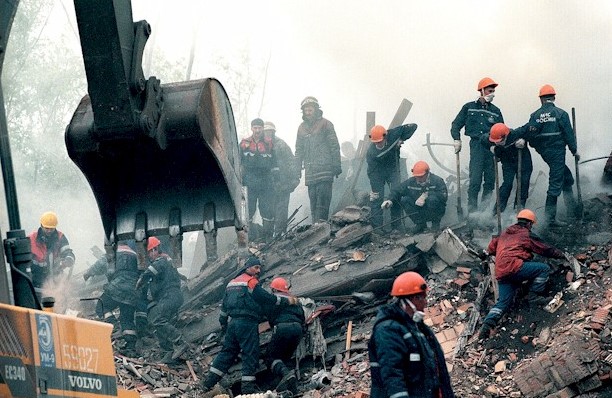
Москва, Каширское
Volgodonsk
On September 13, 1999, just hours after the second explosion in Moscow, Russian Duma Chairman Gennady Nikolaevich Seleznyev (1947-2015) of the Communist Party announced: «I have just received a report. AccorМосква, Каширскоеding to information from Rostov-on-Don, an apartment building in the city of Volgodonsk was blown up last night.» But he had spoken out of turn, because that happened only three days later, on September 16, 1999, at 5:57 a.m .A truck bomb exploded next to a nine-story apartment building in the southern Russian city of Volgodonsk, killing 17 people and wounding 69.
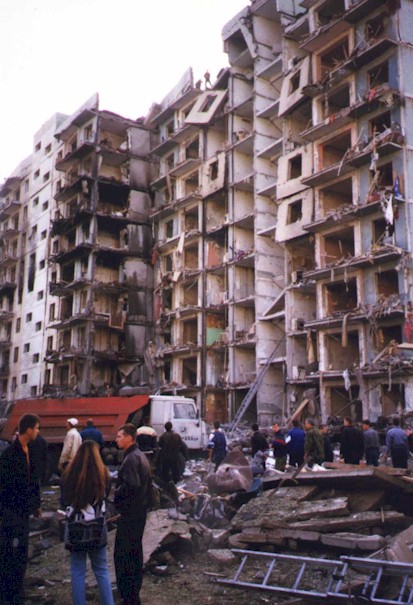
Волгодонск
The Mistake of Seleznyev Mikhail Ivanovich Trepashkin (°1957) was an FSB security expert until in 1997, when he was dismissed for refusing to cover up a corruption case involving high-ranking officials within the FSB (the successor to the KGB). In 2002, he became a member of the Kovalyov Investigative Committee, which was to investigate the bombings following request of some members in the Duma. Trepashkin gave some details about the man who had given the note about the explosion that was yet to come to Duma Chairman Seleznyev on 13 September 1999. This man turned out to be an FSB officer.
After his dismissal, Trepashkin became a lawyer and acted for, among others, the sisters Tatyana and Alena Morozova, whose mother had been killed in the attack on Guryanova Street. Trepashkin found a witness, Mark Blyumenfeld, the owner of the basement where the Ryazan bombs were planted. This led him to Vladimir Mikhailovich Romanovich, a former KGB colleague of his who was specialised in infiltrating Chechen groups. On a composite sketch, Blyumennfeld recognised Romanovich as the person to whom he had rented the cellar.
Blyumennfeld was not questioned as a witness; on the contrary, he was held in pre-trial detention for a month in the FSB prison in Lefortovo, and threatened with being accused of involvement himself if he insisted that he had recognised Romanovich. The composite sketch of Romanovich disappeared from the file and was replaced by a portrait drawing of a certain Mukhit Lepanov, in whose name the rental contract had been concluded. But, wWhen they found out that Lepanov had already died a year earlier, and that the whole case against Lepanov had been processed using the passport of a deceased person, they quickly tried to change it by using the face of Atchimez Shababovich Gochiyaev (°1970), the leader of the Wahhabists in Karachayevsk. Blyumenfeld «identified» him, as requested, and the Chechen trail could officially be followed.
According to the Public Prosecutor's Office, Romanovich himself could not be questioned: he was said to have died in 2000, a few months after the bomb attack, in a «car accident with hit-and-run» in Cyprus. We will see later that this did not really correspond to the truth either. A week before the hearing of the trial during which Trepashkin could have disclosed the abovementioned facts, he was arrested for «illegal possession of weapons». On 19 May 2004, in a closed session of the military court, he was sentenced to 4 years in prison for illegal possession of weapons and disclosure of state secrets. A regional court in Moscow later dismissed the charge of illegal possession of weapons (the police themselves had put a gun in his car), but the charge of disclosure of state secrets implicitly admitted the authenticity of his statements. After all, it is rather difficult to disclose public state secrets that do not exist. |
The individuals behind the bombings were able to obtain or manufacture several tons of powerful explosives and transport them undetected to numerous destinations in Russia.
Although the responsibility for the bombings remained unclear, Putin used them as an additional reason to launch a military operation in Chechnya, which he justified as a response to the terrorist acts. On September 20, 1999, the Russian Air Force began bombing the territory of Chechnya and the Second Chechen War was a fact.
«Sugar» found in Ryazan
On September 22, 1999, at 8:30 p.m., the bus driver Alksxey Kartofelnikov, a resident of an apartment building at Novoselov Street 14/16 in the city of Ryazan, noticed two suspicious men carrying bags from a white Zhiguli into the basement. There was also a woman present. The last two digits of the license plate number T 534 BT 77 RUS were covered with other digits T 534 BT 62 RUS. The original digits indicated that the car was registered in Moscow, but the affixed digits were supposed to suggest that it was a car from Ryazan. Kartofelnikov notified the Dashkovo-Pesochninsky branch of the Ministry of Internal Affairs in Ryazan.
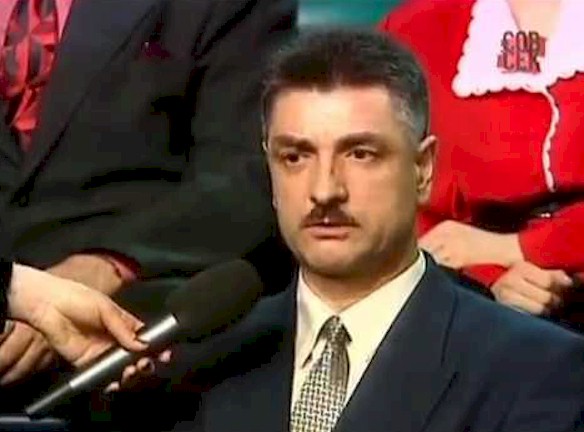
Алексей Картофельников
By the time the police arrived on Novoselov Street, the car and the three people had disappeared. The police found three bags of a yellow granular substance in the basement, each weighing 50 kg. Attached to the bags were a detonator and a timer, which was set to explode at 05:30 a.m.. The head of the local demolition team was able to disconnect the detonator and the timer. Nevertheless, residents of the surrounding buildings fled their homes in panic, with the result that almost 30,000 residents spent the night on the streets.
The next day, an employee of the Ryazan telecommunications service, Natalia Yukhnova, listened to a suspicious phone call to Moscow an rheard a conversation about «the two men and the woman», ending with the following instruction: «Leave the city one by one, because there are road patrols everywhere». The number called was traced to a telephone exchange serving the FSB offices on Lyubanka Square in Moscow.
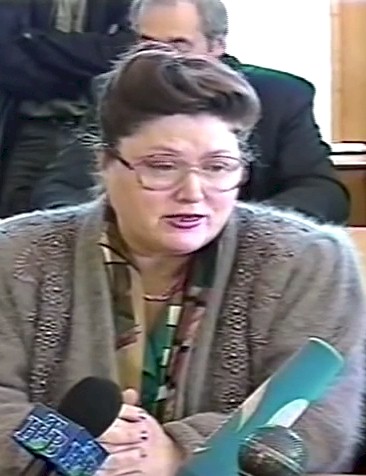
Наталья Юхнова
The Russian authorities’ position on the incident in Ryazan has changed significantly over time. Initially, it was declared a real threat by the FSB and the federal government. On September 23, the Press Centre of the Russian Ministry of Internal Affairs issued a statement that «during the investigation of the named substance, the presence of hexogen vapours was discovered» and that the explosive was defused. This was confirmed by Lieutenant Colonel Sergey Viktorovich Kabashov, head of the Internal Affairs Department of the Oktyabrsky District of Ryazan. Hexogen is an ingredient used to make explosives for bombs. At 7:00 p.m. that day, Vladimir Putin praised the vigilance of the residents of Ryazan and ordered aerial bombardments of the Chechen capital Grozny in response to the «terrorist acts».
However, this thesis changed later. The three people who had planted the explosives in Ryazan were, thanks to the intercepted phone call to Lyubanka, unexpectedly arrested by the local police that same day. To the great surprise of the officers, they showed their FSB badges when they were arrested. The next day, Nikolay Platonovich Patrushchev (°1951), director of the FSB, announced «that the incident in Ryazan had been an anti-terrorist exercise and that the bags found there contained only sugar».

Николай Платонович Патрушев
He ordered the release of the FSB agents involved, but their names were not made public. FSB general Aleksander Aleksandrovich Zdanovich (°1952): «We also use people who are part of our secret staff, and we never show them. The information about these people remains secret for 75 years»..
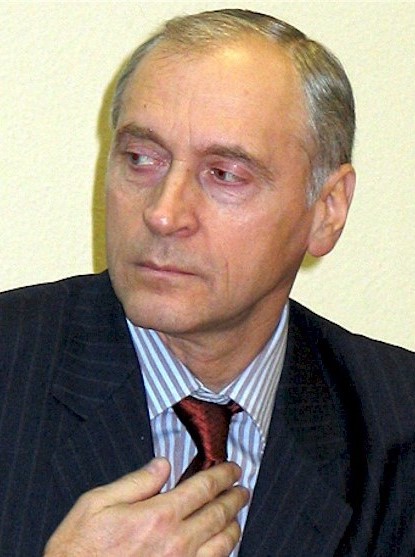
Александр Александрович Зданович
Strangely enough, it was also stated at that time that, despite earlier confirmations, «no hexogen had been used» in the attacks in Buynaksk, Moscow and Volgodonsk. Hexogen was then produced in only one factory in Russia, in the city of Perm. Perhaps the FSB changed the story about the type of explosive because it was difficult to explain how huge quantities of hexogen could disappear from the heavily guarded Perm facility, and to try to avoid revealing similarities between the incident in Ryazan and the successful attacks.
However, the names of the three FSB agents in Ryazan would remain hidden from the public for only ten years, thanks to the Moscow translator Veronika Pavlovna Kamenskaya (°1962).
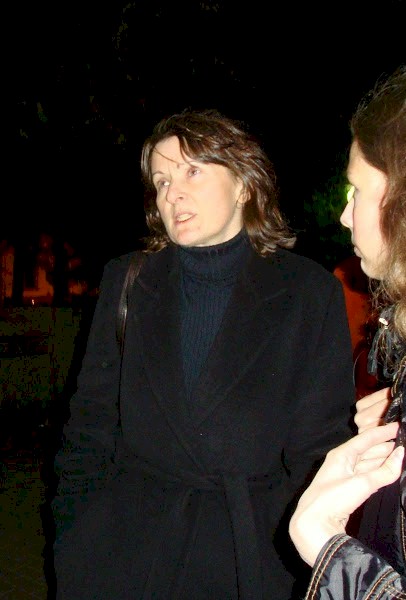
Вероника Павловна Каменская
Immediately after the testimony of bus driver Kartofelnikov, a composite sketch had been made of the three aforementioned people. This sketch was shown in the documentary film Assassination of Russia, which was realised in 2002 by the French director Jean-Charles Deniau (°1945) and producer Charles Gazelle (°1958), in which footage had been used from the then independent Russian TV channel NTV, and information published in the book Blowing Up Russia by Aleksander Valterovich Litvinenko (1962-2006) and Yuri Georgievich Felshtinsky (°1956).

Взрывая Россию
The NTV footage in the documentary came from a talk show that NTV had organised on March 23, 2000, in which everyone – residents, FSB, police, journalists and human rights activists – had been allowed to speak freely about the case. Below you can watch the full broadcast.
The NTV program was nominated for a major journalism award, but one morning in September 2000, the channel received a letter signed by the residents of house number 14/16 on Novoselova Street in Ryazan, in which the FSB was not only exonerated, but the residents even received expressions of gratitude «which they had not been able to express before.» In short, everything was different from what the residents of the house had said on the broadcast. When journalists asked questions to the residents of the building about their signatures, they replied that they had never signed the letter accusing NTV. One resident of this building, Viktor Ivanovich Kuznetsov, a former police officer who had previously carried out small assignments for the FSB, admitted in an interview with Novaya Gazeta on September 21, 2000, that he had forged the signatures by going around the building «to pay for the intercom at the front door.»
On April 14, 2001, the NTV channel was forcibly acquired by the state owned energy company Gazprom, after an attempt of oligarch Mikhail Borisovich Khodorkovsky to try to keep the station independent by offering to invest 200 million in it.
The bombers
Ten years after the events, in May 2009, translator Veronika Kamenskaya was watching the documentary film. When she saw the composite sketch, made on the night of September 22 to 23, 1999, she recognised the people depicted as her former college classmate Maria Leonidovna Stroganova-Matveeva (°1963), her childhood friend Aleksander Vladimirovich Semenyuk (°1961) and the latter's friend Valery Maylisovich Mamedalyev (°1961). Each of them has family ties with Chekists (employees of the Cheka secret police, and its successors NKVD, OGPU, NKVD and KGB), and… Maria Leonidovna was the spouse of Vladimir Romanovich, the tenant of the cellar in Ryazan, who was said to have died in a car accident in Cyprus in 2000.
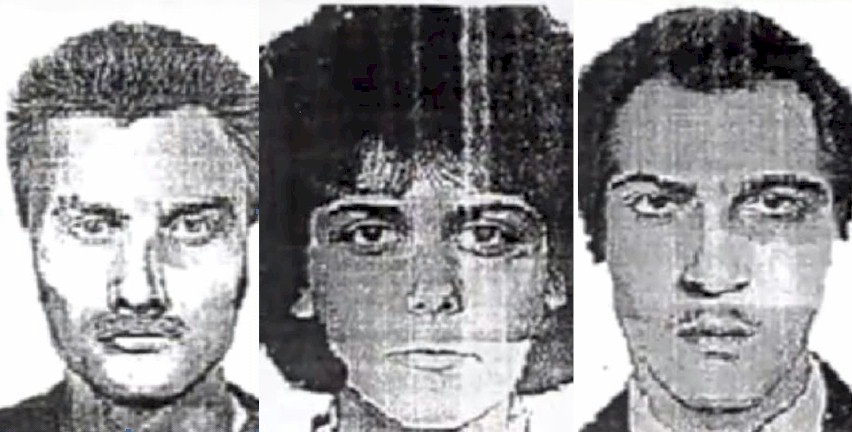
Композиционный эскиз бомбардировщиков
Initially, Kamenskaya didn't do anything with this information, but on October 3, 2009, the blogger with the pseudonym Aleksander Danila-Abu-Ilias published an article on the social platform LiveJournal about the events in Ryazan. On October 6, she wrote a comment in which she stated that she had not only recognised these three people, but also that Romanovich was still alive, that she had spoken to him many times, and that he had called her that same day to threaten her with reprisals and legal action if she revealed this. She also gave the address where he was staying at that time. On October 9, 2009, she added that she had tried to call thirteen news outlets, but that she always got Russian employees on the line who showed no interest in her information. She named, among others, Der Spiegel, Newsweek, Le Figaro, Libération, Le Monde, and The New York Times. On October 10, her profile on LiveJournal was closed. Her statement was not acted upon, but she was frequently harassed, and according to her reports, her apartment was broken into several times.
Parliamentary investigation
Attempts to start an independent investigation were blocked by the Russian government. Yuri Petrovich Shchekochikhin (1950-2003), a State Duma deputy from the Yabloko party who had investigated the bombings as a journalist for Novaya Gazeta, submitted two motions for a parliamentary investigation into the events, but the motions were rejected by the Duma in March 2000.
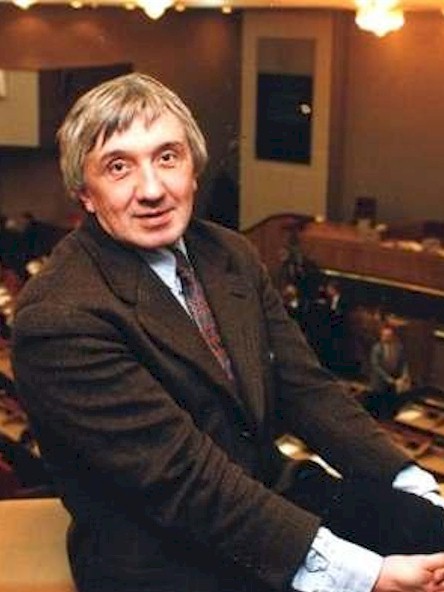
Юрий Петрович Щекочихин
On 4 April 2002, at the initiative of the Liberal Russian party, the «Public Commission for the Investigation of the Circumstances of the Explosions of Houses in the Cities of Moscow and Volgodonsk and the Conduct of Exercises in the City of Ryazan in September 1999» was established. The commission was headed by State Duma deputy Sergey Adamovich Kovalyov (1930-2021). He had been one of the authors of the Russian Declaration of the Rights of Man and Citizen in 1991.
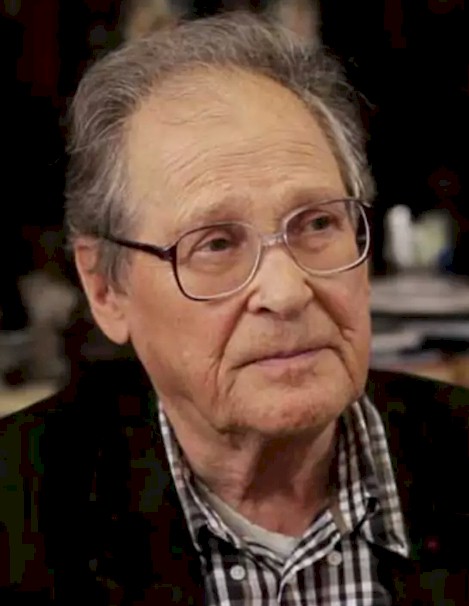
Сергей Адамович Ковалёв
The commission was constantly hampered by the government's refusal to respond to questions. The most active commission members were murdered in 2003. Sergey Adamovich Yuschenkov (1950-2003) was shot near his home, and initiator Yuri Shchekochikhin was poisoned with thalium. Another member of the commission, Otto Rudolfovich Latsis (1934-2005), was attacked in November 2003 and died in a hospital two years later, on November 3, 2005, after a car accident.
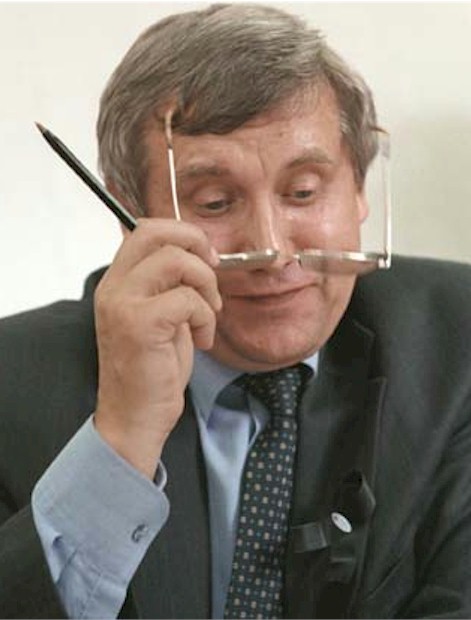
Сергей Адамович Юшенков
Unlike the victims of the bombings, the commission died a quiet death. Surviving victims of the Guryanova bombing asked President Dmitry Anatolyevich Medvedev in 2008 to resume the official investigation, but this did not happen.
What we do know is that in Moscow, Volgodonsk, and Ryazan the attacks had been supervised by the FSB through a chain of command under the supervision of the director of the Counterterrorism Department, General German Alekseevich Ugriumov (1948-2001). Perhaps as a reward, on January 21, 2001 Vladimir Putin transferred the supervision of military operations in Chechnya from the Ministry of Internal Affairs and the army to the FSB, and placed Ugriumov at the head of the regional counterterrorism staff, where ha was responsible for «the liquidation of the leaders of terrorist groups.» According to the Saint Petersburg Times, this was the first time in Russia's history that the security services had gained control over a military operation. Ugriumov died on May 31, 2001, officially from heart failure. However, according to Grigory Mikhailovich Pasko (°1962), journalist and founder of the magazine Ecology and Law, Ugriumov had shot himself in the head.
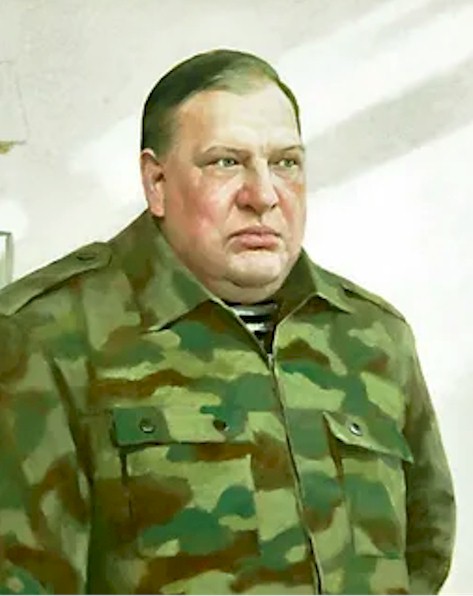
Герман Алексеевич Угрюмов
The adventures of Private Alexey Pinyaev In March 2000, Novaya Gazeta journalist Pavel Voloshin wrote the story of Private Alexey P. (later identified as Pinyaev) of the 137th Paratrooper Regiment. In November 1999, Pinyaev was guarding a warehouse of weapons and ammunition near the city of Ryazan. Together with a colleague, he entered the warehouse to inspect the weapons. Inside the warehouse were bags with the word «sugar» on them. The two paratroopers cut a hole in one of the bags and put some of the product in a plastic bag. They made tea with the «sugar», but the taste of the tea was terrible. They became afraid that the substance might turn out to be saltpeter, and took the plastic bag to a platoon commander. He consulted a military engineer, who identified the substance as hexogen. After the newspaper report, FSB officers from Tula and Moscow visited Pinyaev's unit, accused them of revealing a state secret and told them: «You can't even imagine what serious business you are involved in». The regiment sued the publishers of Novaya Gazeta for insulting the honour of the Russian army, since, according to their statement, there was no warehouse on the test track of the 137th regiment, and there was not even a private Alexey Pinyaev in the regiment. A curious detail: Private Alexey Pinyaev, the one who «was not even in the regiment», was charged together with his colleague. To his surprise, they were not prosecuted for stealing sugar, but for revealing state secrets. Shortly afterwards, Pinyaev was transferred to Chechnya, where an armoured car ran over his leg. The accident happened in deep mud, so he did not lose his leg. After this, he was sent for treatment to his old garrison in Naro-Fominsk, where he was allowed to continue his service after leaving the hospital. |
Convictions
For the Buynaksk attack, seven people, mostly Dagestani Wahhabis, were convicted by the Dagestan Supreme Court on March 19, 2001 and April 9, 2002.
The trials of the Moscow and Volgodonsk attacks were held behind closed doors and concluded in 2004. The Russian Prosecutor's Office considered it proven that all apartment bombings were carried out under the orders of the above-mentioned Achimez Shagabanovich Gochiyaev, and planned by Ibn al-Khattab (1969-2002), a warlord active in Chechnya who had already been killed by the FSB in 2002, and the Saudi Islamist Muhammad bin Abdullah bin Saif al-Buainain (1968-2005), who operated under the aliases Abu Omar al-Saif and al-Jaber as the mufti of Arab fighters in Chechnya, and was killed in Dagestan in December 2005 during a battle with the Russian army. According to the investigators, the explosives did not come from Perm, but were prepared at a fertilizer plant in Urus-Martan, Chechnya.
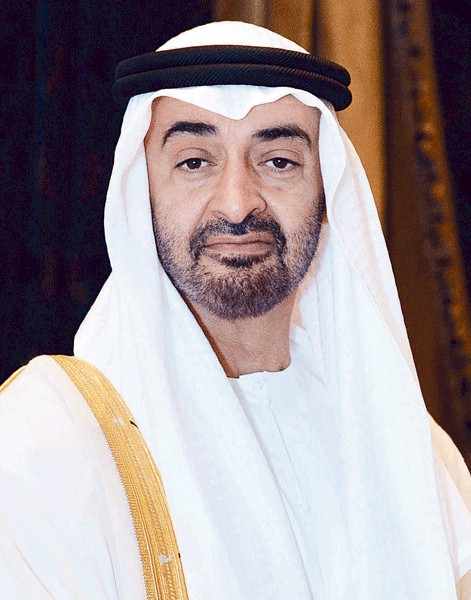
Мухаммад бин Абдулла бин Саиф аль-Буайнайн
As for the execution, the Kislovodsk District Court sentenced on May 14, 2003, former traffic policeman Stanislav Lyubichev to four years in prison for allegedly accepting bribes to allow unhindered passage to a truck transporting an improvised explosive device disguised as bags of sugar. On January 12, 2004, the Moscow District Court sentenced two men, Yusuf Ibrahimovich Krymshamchalov (°1960) and Adam Osmanovich Dekkushev (°1962), both from the autonomous Russian republic of Karachay-Cherkessia, to life in a special colony. Five other defendants, mainly from Karachay-Cherkessia, had already been murdered by the FSB at the time of the verdict. On July 8, 2004, the Supreme Court of Russia upheld the verdict of the Moscow District Court.
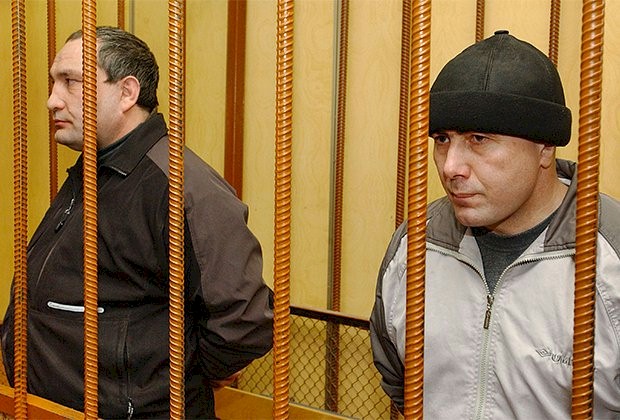
Юсуф Крымсжамчалов и Адам Деккучев
The FSB bombers never had to stand trial.
The explosions at the Intourist hotel and the Okhotny Ryad shopping mall on Manège Square were dealt with in a separate trial in Moscow in 2009. These charges turned out to be directly related to Chechnya. They were directed against the aforementioned former pop singer Joseph Kobzon and the Chechen Umar Aliyevich Yabraylov (°1958), the chairman of the Plaza group, which managed the Okhotny Ryad shopping mall. They had both refused to sponsor Shamil Basaev's militias, whereupon Basaev decided to take revenge. His financier Khalid Khuguyev (1956-2021), nicknamed The Mongol, had organised the attacks..
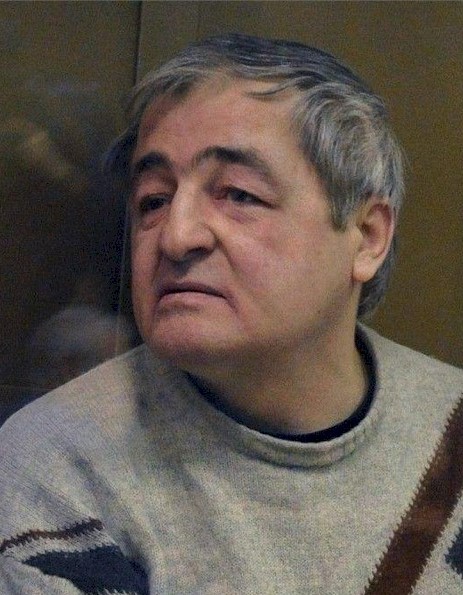
Халид Хугуев
The bombings were carried out by Magomadzair Gadzhikaev. Khuguyev was sentenced to 25 years in a maximum-security penal colony in 2009. Gadzhikaev was sentenced to 15 years in prison. In 2010, the Supreme Court reduced Khuguyev's sentence to 22 years and Gadzhikaev's to 13 years. Khuguyev was murdered on February 13, 2021 by a fellow inmate in Primorsky Penal Colony No. 27.
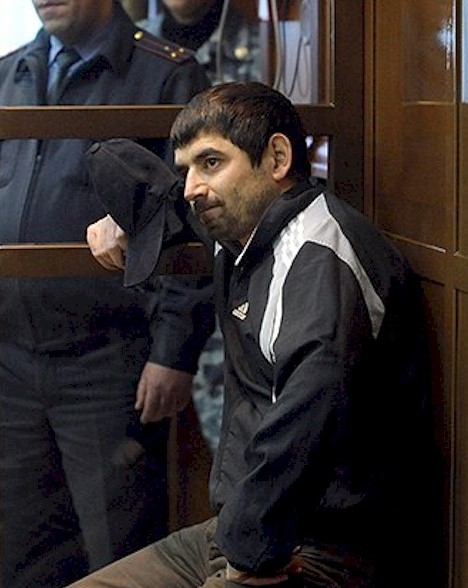
Магомадзаир Гаджиакаев
Politcal murders
In addition to the deaths caused by the explosions and the people who are mentioned earlier in this article, some other political assassinations were committed that were directly or indirectly related to the attacks.
Artyom Henrikhovich Borovik (1960-2000) was a journalist who was investigating the bombings. He was the host of the programme Взгляд [Vzgljad] or Opinion on the former Soviet Central Television Channel One. He received numerous death threats and died in March 2000 in a suspicious plane crash that Yuri Georgievich Felshtinsky (co-author of the book Blowing Up Russia) and Vladimir Valerianovich Pribylovsk (°1956), the chairman of the Information and Research Center Panorama, both considered a murder.
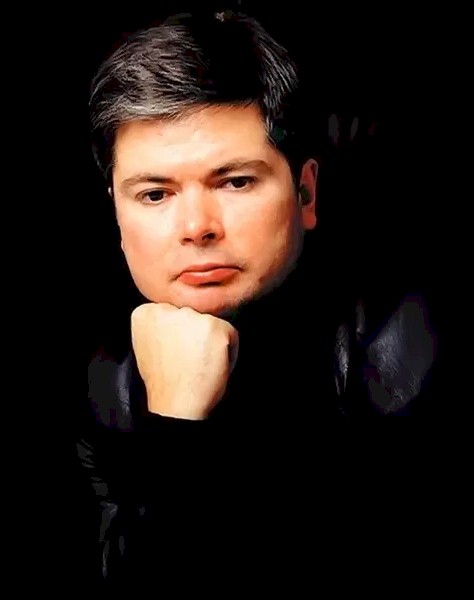
Артем Генрихович Боровик
Two other journalists who investigated the bombings were also murdered by the FSB. Novaya Gazeta journalist Anna Stepanovna Politkovskaya (born Anna Stepanovna Mazepa, 1958-2006) was shot dead in the elevator of her apartment building as a birthday present on Vladimir Putin’s birthday on October 7, 2006, and former FSB agent Aleksander Valterovich Litvinenko (1962-2006) was poisoned with a high dose of radioactive polonium-210 just over a month later by former FSB agents Andrey Konstantinovich Lugovoy (°1966) and Dmitri Vladimirovich Kovtun (1965-2022).
You can read more about Politkovskaya and Litvinenko by clicking on the arrow below.
Diplomat Igor Maratovich Ponomarev (1965-2006) died in London. He showed symptoms of thalium poisoning. He died shortly before he was to meet Mario Scaramella (°1970). Scaramella was the man with whom Aleksander Litvinenko had arranged to discuss the murder of Anna Politkovskaya in the sushi bar Itsu on 1 November 2006. It was during that meeting that Litvinenko was given polonium-210.
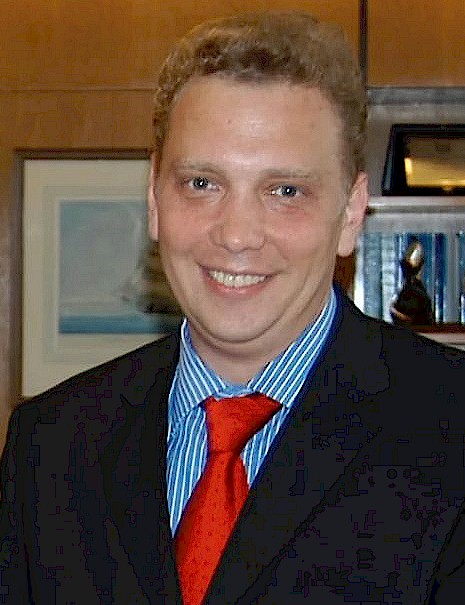
Игорь Маратович Пономарев
